Table of Contents
Cast iron is a versatile and widely used material known for its durability and heat resistance. However, welding cast iron can be challenging due to its brittle nature and susceptibility to cracking. MIG (Metal Inert Gas) welding offers an effective solution for joining cast iron components without compromising their integrity. In this guide, we will delve into the intricacies of MIG welding on cast iron, offering expert insights, tips, and step-by-step instructions.
MIG Weld Cast Iron: The Basics
MIG welding, also known as Gas Metal Arc Welding (GMAW), is a process that employs a consumable electrode wire and an inert shielding gas to create strong, reliable welds. When it comes to cast iron, the process requires careful preparation and execution to avoid issues like cracking, distortion, and poor fusion.
Key Steps for Successful MIG Welding on Cast Iron
1. Material Preparation
Proper preparation is essential for a successful weld. Clean the cast iron surface thoroughly to remove dirt, grease, and contaminants that could affect the weld quality. Preheat the cast iron piece to minimize thermal stress during welding.
2. Electrode Selection
Choose an electrode with high nickel content, such as ENiFe-C1, as nickel promotes ductility and reduces the likelihood of cracking. Additionally, select the appropriate wire diameter for the cast iron thickness.
3. Setting the Welder
Set the welding machine to direct current electrode positive (DCEP) and adjust the voltage and wire feed speed according to the manufacturer’s recommendations.
4. Welding Technique
Employ a stringer bead technique, moving the welding gun in a steady back-and-forth motion. Avoid excessive heat buildup by using short weld beads and allowing sufficient cooling time between passes.
5. Peening and Post-Weld Treatment
After welding, peen the weld bead gently with a ball-peen hammer. This helps relieve stress and prevents cracking. Perform stress-relieving treatments by slow cooling or using a controlled oven to prevent sudden temperature changes.
Tips from Experts: Achieving Flawless Cast Iron Welds
- Maintain Proper Preheat: Consistent preheating is crucial for preventing cracks. Gradually heat the entire piece to the recommended temperature range to ensure uniformity.
- Use Backstep Technique: Weld in a backstep pattern, progressing from the end to the beginning of the joint. This approach minimizes heat-affected zones and reduces the risk of cracking.
- Control Heat Input: Avoid excessive heat, as it can lead to distortion and cracking. Control the welding parameters to manage heat input effectively.
Overcoming Common Challenges
Cracking
One of the primary challenges in cast iron welding is cracking. To prevent this, focus on proper preheating, slow cooling, and selecting the right filler material.
Distortion
Distortion can occur due to high heat input. Using smaller weld beads, practicing proper cooling techniques, and clamping the workpiece can help mitigate distortion.
Poor Fusion
Inadequate fusion can result from improper welding techniques or insufficient heat. Ensure proper electrode manipulation and maintain optimal heat settings to achieve strong fusion.
What MIG Wire is Used to Weld Cast Iron?
Welding cast iron is a specialized skill that requires careful consideration of various factors, including the type of MIG wire, the welding technique, and the choice of gas. In this comprehensive guide, we will delve into the world of cast iron welding, exploring the best practices, suitable MIG wires, optimal gas choices, and even the possibility of using mild steel MIG wire for this intricate process.
Understanding the Basics of Cast Iron Welding
Cast iron, known for its excellent castability and heat retention properties, poses unique challenges when it comes to welding. The key lies in selecting the appropriate MIG wire that matches the characteristics of cast iron. While there are various types of MIG wires available, not all are suitable for cast iron welding.
Choosing the Right MIG Wire for Cast Iron Welding
When it comes to welding cast iron, nickel-based MIG wires are the go-to choice. These wires are designed to provide high tensile strength, excellent crack resistance, and good machinability, all crucial factors for successful cast iron welding. The nickel content in these wires helps to counteract the brittleness that is characteristic of cast iron.
The Best Way to Weld Cast Iron
Welding cast iron demands precision and expertise. The preheating and cooling process is critical to avoid cracks in the material. The preferred technique for welding cast iron is preheating the material slowly and thoroughly, often using oxy-acetylene torches until it reaches a suitable temperature range of around 500°F (260°C) to 1200°F (649°C). This helps to minimize thermal stress during welding.
Exploring Gas Choices for MIG Welding Cast Iron
The choice of gas for MIG welding cast iron plays a significant role in the welding process. Argon and helium are commonly used shielding gases for cast iron welding. The combination of these gases provides a stable arc, excellent heat control, and minimal spatter, ensuring a cleaner weld.
Can You Weld Cast Iron with Mild Steel MIG Wire?
While it is possible to use mild steel MIG wire for cast iron welding, it is not the optimal choice. Mild steel MIG wire lacks the necessary properties to provide a strong and durable weld on cast iron. The brittleness of cast iron combined with the properties of mild steel can result in welds that are prone to cracking and poor overall performance. It’s advisable to use nickel-based MIG wires specifically designed for cast iron welding.
The Importance of Expertise and Precision
Welding cast iron demands a high level of skill and precision. It’s crucial to understand the unique characteristics of cast iron, including its brittleness and susceptibility to cracks. Moreover, having a clear understanding of the appropriate preheating, welding, and cooling techniques is essential for achieving successful cast iron welds.
FAQs – MIG Weld Cast Iron
Q: Can I MIG weld cast iron without preheating?
A: Preheating is essential to prevent cracking and achieve successful welds on cast iron. Skipping this step can lead to weld failures.
Q: What type of shielding gas should I use for MIG welding cast iron?
A: Use 100% argon or a mix of argon and CO2 as the shielding gas. This helps protect the weld pool from atmospheric contamination.
Q: Can I use regular MIG wire for cast iron welding?
A: No, it’s recommended to use an electrode wire with high nickel content to ensure proper ductility and reduce the risk of cracking.
Q: How do I prevent overheating during welding?
A: Avoid prolonged welding in one area. Instead, use short weld beads and allow cooling time between passes to prevent overheating.
Q: Is post-weld heat treatment necessary for cast iron welding?
A: Post-weld heat treatment can help relieve stress and minimize the risk of cracking. It’s recommended for critical applications.
Q: Can I weld different types of cast iron using the same technique?
A: Different types of cast iron have varying compositions, so it’s important to adjust your welding approach based on the specific type you’re working with.
How to MIG Weld Cast Iron
Conclusion
MIG welding on cast iron is a skill that requires knowledge, precision, and practice. By following the right techniques and tips, you can achieve strong, durable welds on cast iron components. Remember the importance of proper preparation, electrode selection, and controlled heat input to overcome the challenges associated with welding this versatile material. With patience and expertise, you can master the art of MIG welding cast iron and unlock its potential for various applications.
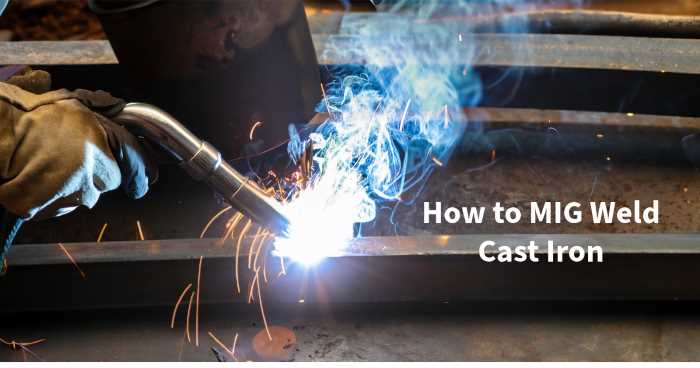
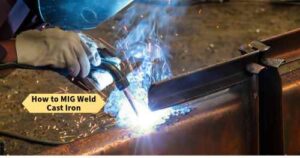
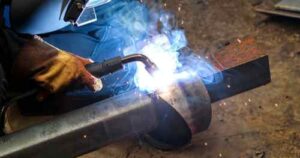

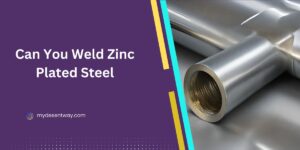

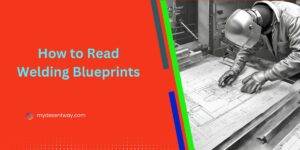




1 thought on “How to MIG Weld Cast Iron: A Comprehensive Guide”